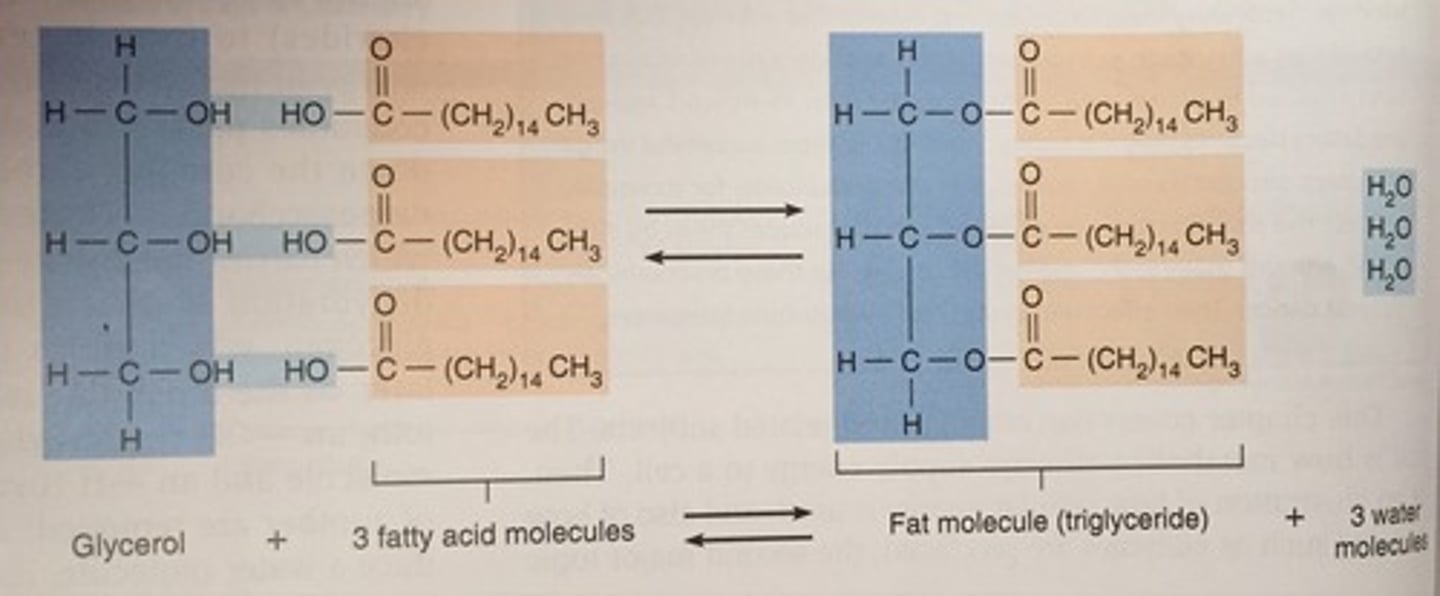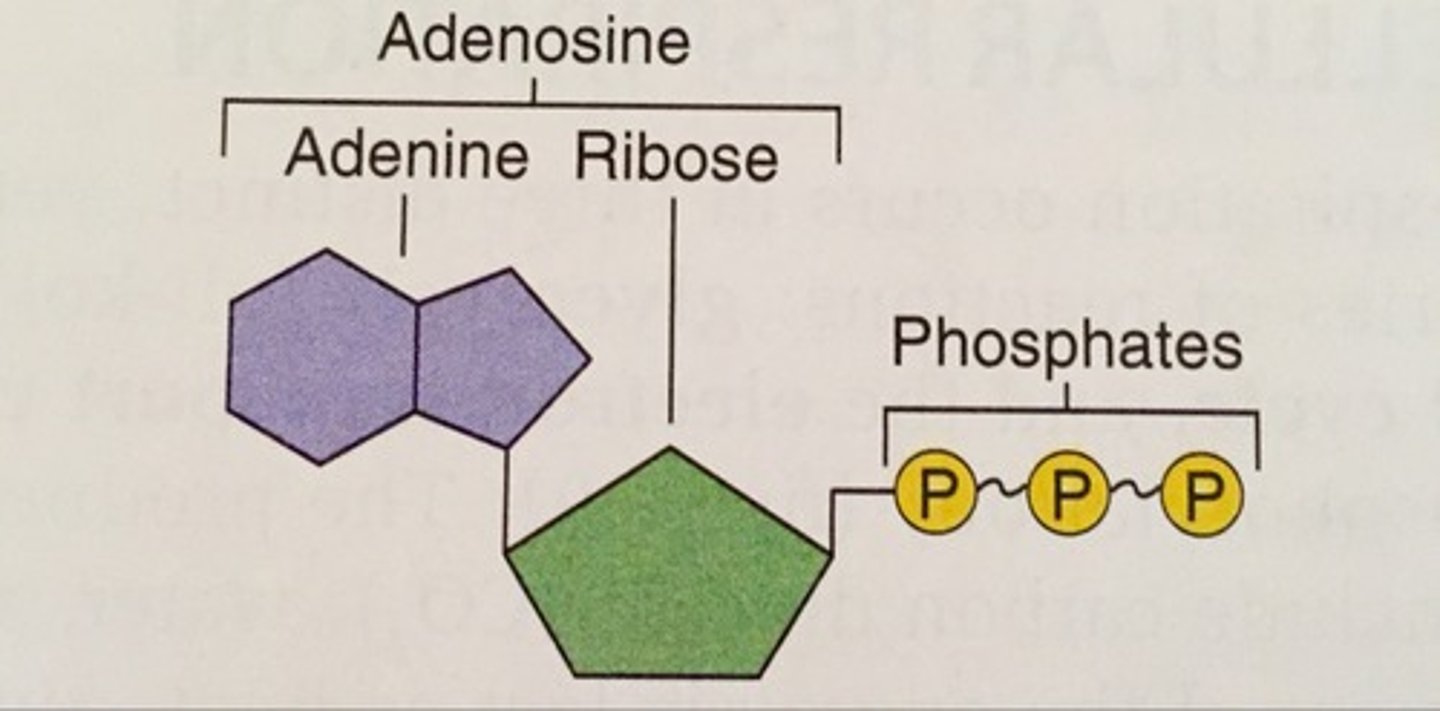Hole's Anatomy and Physiology: Chapter 4
1/118
There's no tags or description
Looks like no tags are added yet.
Name | Mastery | Learn | Test | Matching | Spaced |
|---|
No study sessions yet.
119 Terms
Aer-
Air
Aerobic
Respiratory process that requires oxygen
An-
Without
Anaerobic Respiration
Respiratory process that doesn't require oxygen
Ana-
Up
Anabolism
Cellular processes in which smaller molecules are built up into larger ones
Cata-
Down
Catabolism
Cellular processes that break down larger molecules into smaller ones
Co-
With
Coenzyme
Substance that unites with a protein to complete the structure of an active enzyme molecule
De-
Undoing
Deamination
Process that removes nitrogen-containing portions of amino acid molecules
Mut-
Change
Mutation
Change in genetic information
-strat
Spread out
Sub-
Under
Substrate
Substance upon which an enzyme acts
-zym
Causing to ferment
Enzyme
Protein that speeds up a chemical reaction without itself being consumed
Cellular Metabolism
The sum total of chemical reactions in the cell
Intermediary Metabolism
Processes that obtain, release, and use energy
Primary metabolites
Products of metabolism essential to survival
Secondary Metabolites
Are not essential to survival, but may provide an advantage/enhancement
Dehydration Synthesis
When smaller molecules combine to form larger ones; form of anabolism
Dehydration Synthesis
Stores energy in the bonds of the larger glycogen molecules
Anabolism
Provides all the materials a cell needs for maintenance, growth, and repair
Dehydration Synthesis
Molecules join and lose water molecule(s)
Monosaccharide + Monosaccharide ---> Disaccharide + H2O
Dehydration Synthesis of Monosaccharides into Glycogen
Glycerol + 3 Fatty Acids ---> Triglyceride + 3 H2O
Dehydration Synthesis of Glycerol and Fatty Acid in fat cells AKA Adipose Tissue
Amino Acid + Amino Acid ---> Dipeptide + H2O
Building of Protein molecules with Dehydration Synthesis
Dehydration Synthesis and Hydrolysis of Monosaccharide

Dehydration Synthesis and Hydrolysis of Glycerol and Fatty Acid

Dehydration Synthesis and Hydrolysis of Amino Acid

Peptide Bond
Holds Amino Acids together
Dipeptide
Two amino acids bonded together
Polypeptide
More than two amino acids bonded together
Protein
Polypeptide consisting of 100 or more amino acids
Hydrolysis
The break down of larger molecules into smaller ones; form of catabolism
Hydrolysis
The reversal of Hydration Synthesis
Activation Energy
The energy required for metabolic reactions
Active Site
Part of an enzyme that temporarily bonds with a substrate
Enzyme-Catalyzed Reaction

Metabolic Pathways
Sequences of enzyme-controlled reactions that lead to synthesis or breakdown of biochemicals
Lipase
Lipid splitting enzyme
Protease
Protein splitting enzyme
Amylase
Starch (amylum) splitting enzyme
Sucrase
Sucrose splitting enzyme
Maltase
Maltose (sugar) splitting enzyme
Lactase
Lactose (sugar) splitting enzyme
Rate limiting enzyme
Enzyme present in small amounts, that controls the rate of a metabolic pathway by regulating one of its steps
Cofactor
Non-Protein component that helps active site attain the appropriate shape
Cofactor
Non-Protein component that helps bind the enzyme to its substrate
Cofactor
May be an ion of an element (copper, zinc, iron) or a coenzyme
Coenzyme
Organic molecule composed of vitamin molecules or incorporate alternate forms of vitamin molecules
Vitamins
Essential organic molecules that human cells can't synthesize in sufficient amounts if at all
Energy
The capacity to change something; the ability to do work
Common forms of Energy
Heat
Light
Sound
Electrical
Mechanical
Chemical
Energy
Can't be created or destroyed, but can be changed from one form to another
Cellular Respiration
The process that transfers energy from molecules and makes it available for cellular use
Adenosine Triphosphate (ATP)
A molecule that carries energy in a form the cell can use
ATP
Consists of:
Adenine (1)
Ribose (1)
Phosphate (3)
ATP

Skeletal Muscle Contractions
Active Transport
Secretion
ATP powers cellular work such as __________
Adenosine Diphosphate (ADP)
ATP molecule that loses its end/terminal phosphate
Phosphorylation
The process of ADP resynthesizing into ATP using energy released from cellular respiration
Oxidation
The process of oxygen combining with another chemical
Oxidation
Removal of hydrogen or loss of electrons
Oxidation
The opposite of reduction
The three steps of Cellular Respiration
Glycolysis
Citric Acid Cycle
Electron Transport Chain
Glycolysis
Citric Acid Cycle
Electron Transport Chain
The products of these include:
Carbon dioxide (CO2)
Water
Energy
Glycolysis
The breaking of glucose
Glycolysis
Breaks glucose (a 6-carbon molecule) into two 3-carbon pyruvic acid molecules
Glycolysis
Anaerobic phase of cellular respiration
Lactic Acid
Organic compound formed from pyruvic acid during the anaerobic reactions of cellular respiration
Acetyl Coenzyme A
Intermediate compound produced from the oxidation of carbohydrates, proteins, and fats
Genetic code
The correspondence between a unit of DNA information and a particular amino acid
Chromosomes
Long molecules of DNA and associated proteins
Deoxyribonucleic acid (DNA)
Genetic material
Gene
DNA sequence that contains the info for making a particular protein
Four Groups of Organic Molecules
Proteins
Carbohydrates
Lipids
Nucleic Acid
Genome
The complete set of genetic instructions in a cell. Includes the genes and other sequences.
Gene Expression
Genomes that control which proteins are produced in a particular cell under particular circumstances
Nucleotide
The building block of nucleic acid
Nucleotide
Consists of a 5-Carbon Sugar (ribose or dextrose), a phosphate group, and any of several nitrogenous bases
Antiparallel
The sugars forming the two backbones of a DNA molecule
DNA Base
Can be any one of:
Adenine (A)
Thymine (T)
Cytosine (C)
Guanine (G)
Purines
A (adenine) and G (guanine) and they consist of two organic ring structures
Pyrimidines
T (thymine) and C (cytosine) and they have a single organic ring structure
Adenine binds to what?
Thymine
Guanine binds to what?
Cytocine
Purines always bind to ________
Pyrimidines
Complementary Base Pairs
A to T and G to C
Histones
Proteins that DNA is wound around
DNA Polymerase
Catalyzes the base pairing during DNA replication, hydrogen bond
RNA
Ribonuleic Acid, single stranded
Four Nitrogenous bases for RNA
Adenine
Cytosine
Guanine
Uracil (U)
Transcription
The process of copying DNA info into an RNA sequence
Messenger RNA
(mRNA)
RNA that carries info for a protein's amino acid sequence from the nucleus of a cell to the cytoplasm
RNA Polymerase
Recognizes the correct DNA strand and the right direction for RNA synthesis
Condons
A series of 3 bases in mRNA that aid 3 DNA bases in specifying each amino acid in a protein